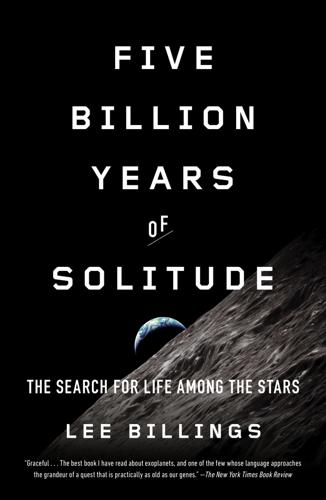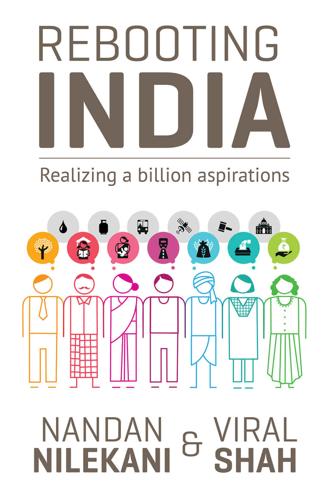nanosatellite
description: small satellite, typically weighing between 1 and 10 kilograms, used for space research, communication, and Earth observation, offering a cost-effective alternative to larger satellites
6 results

When the Heavens Went on Sale: The Misfits and Geniuses Racing to Put Space Within Reach
by
Ashlee Vance
Published 8 May 2023
Yes, it had put some satellites into orbit previously, but those customers had known they were taking a major risk with a still unproven machine. This time around, Rocket Lab and Beck had put their reputations fully on the line and would be flying six satellites on behalf of four customers. Two of the satellites were made by Spire, a satellite start-up that specialized in tracking ships, planes, and weather changes. Tyvak Nano-Satellite Systems also had a weather satellite on board, while a group of California high school students had built a small satellite for a data-gathering experiment. The last two satellites came from an Australian start-up, Fleet Space Technologies, which planned to use its machines as the basis of a new space-based communications network.
…
., 162 Svalbard archipelago, 397 Swarm Technologies, 131 Tata Nardini, Flavia, 239, 241 Teledesic, 388–389 Terra Bella, 111, 288–289 Thiel, Peter, 105 Thompson, Chris in Alaska, 324, 329, 331–332 at Astra, 300–301 joining Astra, 305 Kemp and, 295, 306, 348–349 launch attempts and, 348, 360, 376, 382 modifications to rocket and, 365 Rocket 3 and, 378 rocket tests and, 307, 315 SpaceX and, 302 3D printing, 210 Tirtey, Sandy, 211, 212, 213, 227, 240, 244 tool and die making, 154–157 trees, counting of, 121 Troy 7, 303 Tsiolkovsky, Konstantin, 145 turbopumps, 209–210, 449, 459, 467, 479, 493 Tyvak Nano-Satellite Systems, 238 Ukraine, 403, 435, 436–446, 448–450, 452, 456, 470–471, 485–488 Ukrainian Academy of Sciences, 451 United Launch Alliance (ULA), 449 United Nations Office for Outer Space Affairs, 84, 84n unreality field, 76–77, 83 US Space Force, 391 vacuum chambers, 211–212 Valley of Heart’s Delight, 42 Vandenberg Air Force Base, 456, 460–464, 472–473, 485 Vector Space Systems, 230, 370, 371, 375 Ventions LLC attempts to contact, 249–250 early days of, 255–257 employees from, 290–291, 306 funding and, 257–258 Kemp and, 254 offices of, 255 start of, 254–255 Vernadsky, Vladimir, 451, 459 Verne, Jules, 145 Vienna Declaration on Space and Human Development, 85 Virgin Galactic, 50, 179, 207–208, 356, 421–423, 428 Virgin Orbit, 214, 230, 370, 375, 423n viscous liquid monopropellant (VLM), 196, 197, 202 von der Dunk, Frans, 432 Wallops Island, Virginia, 231, 397 War on Terror, 35 Weeks, David, 414–415 Wells, H.

Five Billion Years of Solitude: The Search for Life Among the Stars
by
Lee Billings
Published 2 Oct 2013
The first ExoplanetSat would cost some $5 million to develop and launch, but subsequent copies could practically roll off the assembly line at a cost of a half million dollars apiece—dirt cheap for any hardware destined for orbit. Each would operate in low Earth orbit for a minimum of one to two years. Nanosatellites are so small that they typically do not require dedicated launch vehicles; instead, they piggyback on rockets launching larger primary payloads. Seager envisioned eventually launching a whole fleet of low-cost ExoplanetSats to surveil all the nearest, brightest stars for potentially habitable transiting planets. The first prototype was set to launch as early as 2013 as part of a NASA program supporting nanosatellites. The practical expertise she would gain in engineering and management from ExoplanetSat’s success would make Seager a more appealing choice for involvement in future NASA missions, but would also serve as a stepping-stone for her own development of more ambitious spacecraft.
…
And the third way is, I’ll simply make so much money that I can literally fund it all by myself.” She had methodically devised overlapping preparations for each path, and explained them to me in more detail. An MIT/Draper Laboratory project she helmed called “ExoplanetSat” lay at the crux of Seager’s interlinked plans. Already well along in development, ExoplanetSat was a “nanosatellite,” a golden metal rectangular box no bigger than a loaf of bread, jam-packed with a tiny telescope, deployable solar panels, and a miniaturized avionics package for precision pointing and ground communications. It was designed solely for the purpose of constantly monitoring a single nearby Sun-like star for any signs of transiting planets, and possessed sufficient sensitivity to detect planets just a bit larger than Earth.
…
Platinum-group metals would be imported to Earth, where they could be used to vastly expand the consumer market for computing devices and renewable energy. Additional revenue would come from third-party licensing of the interplanetary comm network and the technology for cheap interplanetary spacecraft. Seager would provide her expertise in building small telescopes and on-orbit communications, acquired via her work with nanosatellites, as well as her access to MIT’s community of researchers and her knowledge of remote photometric and spectroscopic observations. She saw the venture as part of a broader strategy for aiding the expansion of Earth’s economic sphere into the rest of the solar system, and, someday, beyond. “People forget that right now [space science] is considered a luxury field,” she said.

Exponential Organizations: Why New Organizations Are Ten Times Better, Faster, and Cheaper Than Yours (And What to Do About It)
by
Salim Ismail
and
Yuri van Geest
Published 17 Oct 2014
To fully comprehend the sheer acceleration we’re seeing, recall the $10 billion in investment that was lost on Iridium and other satellite efforts in the 90s. Today, twenty years later, a new breed of satellite companies—Skybox, Planet Labs, Nanosatisfi and Satellogic—are all launching nanosatellites (which are, essentially, the size of a shoebox). The cost per launch is about $100,000 per satellite—a fraction of the $1 billion Iridium incurred per launch for its constellation. More important, by launching a cluster of nanosatellites operating in a coordinated, meshed configuration, the capability of these new satellites blows away what the previous generation could do. For example, Planet Labs already has thirty-one satellites in orbit and plans to launch another one hundred during 2014.
…
For instance, what if you could count the number of cars in any or all Sears or Walmart parking lots throughout the country? Or predict natural calamities like tsunamis and typhoons, as well as their impact? Or measure the increasing wattage along the Amazon River at night? Or track every container ship, in real time, around the world? Soon you can—either via nanosatellites or global Internet access initiatives such a Google’s Project Loon and Facebook’s drones strategies. Even closer down this road is the Google autonomous automobile. The key navigational technology it uses is light radar, also known as lidar. Each car has a spinning lidar unit on its roof that creates a live 3D map of its surroundings to a range of about one hundred meters.
…
Now, toss into this mix Google Glass, the smart eyewear that enables video or images to be recorded or transmitted in real time anywhere as people move throughout their day. Next, add drones, which cost less than $100 and can be flown at a variety of altitudes, their 5-gigapixel cameras capturing everything in the landscape below. And, finally, consider the several nanosatellite companies which are launching mesh configurations of hundreds of satellites into low Earth orbit, and which will provide real-time video and images anywhere on the planet. Given the staggering pace of technological innovation, the possibilities are endless. On a much more intimate level, the human body has approximately ten trillion cells operating as an ecosystem of unimaginable complexity.

Rebooting India: Realizing a Billion Aspirations
by
Nandan Nilekani
Published 4 Feb 2016
A terrorist may use it for more dangerous purposes. More benignly, companies like Amazon want to deliver packages to their customers using small commercial drones.19 In the US, private companies like SpaceX are now pushing the barriers for spacecraft development and innovation, stepping firmly onto what used to be NASA’s playing field.20 As nanosatellites become cheaper, it’s likely that more private operators will enter this space in India as well. A for-profit organization in India is now participating in the Google Lunar XPRIZE challenge to build and design a robot capable of landing on the moon, a domain that formerly only our government space agency, the Indian Space Research Organization (ISRO) operated in.21 The entry of private companies into fields that have traditionally been the monopoly of government will no doubt create a new set of regulatory clashes to be ironed out.

Exponential: How Accelerating Technology Is Leaving Us Behind and What to Do About It
by
Azeem Azhar
Published 6 Sep 2021
Should you develop a rare illness, personalised medications could be your saviour. Cheap wearable devices and regular testing of your blood and microbiota might allow doctors to catch many conditions before they become serious. The combination of large-scale population data and personal information could help fine-tune diets for health. A decade from now, scores of nanosatellites providing real-time sensor data might help us keep track of our natural resources – including coral reefs, ocean ecosystems and forests. Scientists plan to map and track every single one of the 3 trillion trees on the planet, to better understand rates of deforestation – which will be critical in managing our carbon budget.9 Vertical farms could reduce our dependence on water and other resources, all the while providing healthier, more nutritious, food to our cities.

Accessory to War: The Unspoken Alliance Between Astrophysics and the Military
by
Neil Degrasse Tyson
and
Avis Lang
Published 10 Sep 2018
As the price of highly useful goods drops, the number of affordable applications tends to grow. In the shorter run, however, since asteroid mining won’t start tomorrow—although startups are multiplying, and the Finnish Meteorological Institute, for instance, is proposing a fleet of solar-wind-powered nanosatellites to collect data on the composition of several hundred asteroids—we’ll have to come up with other solutions.5 Maybe someone will invent a smartphone that doesn’t need dysprosium. Maybe someone else will finally invent a storage mechanism in lieu of batteries for stockpiling solar energy. Asteroids aren’t the only small celestial bodies that can bring us a little more peace and security.